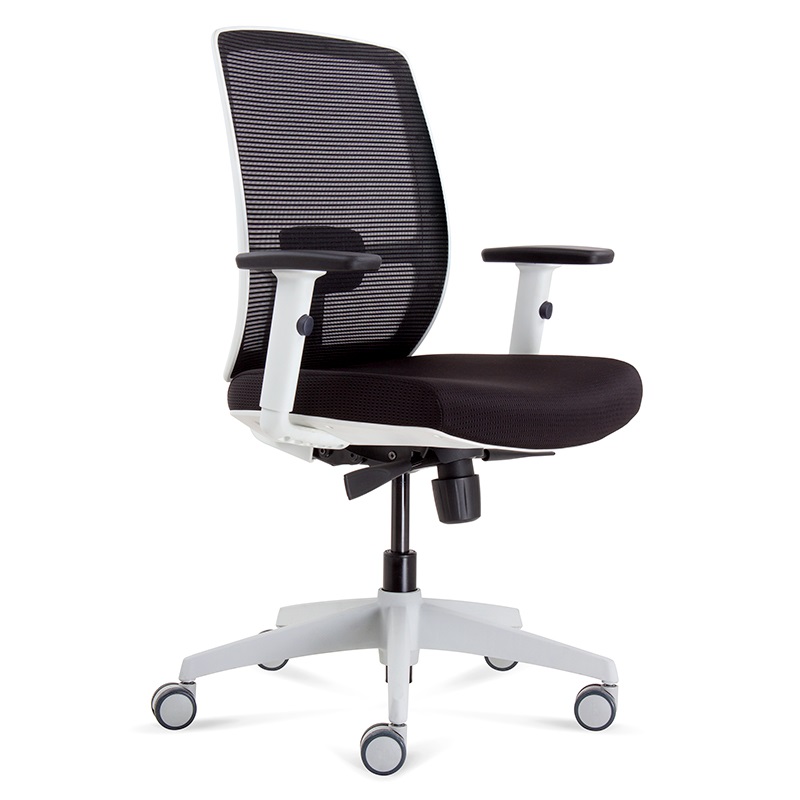Last updated on May 16th, 2023
The majority of modern-age professions force people into taking up a sedentary lifestyle. As in some cases, we are unable to minimise the amount of sitting on office chair, getting an ergonomic chair that suits your body type and specific requirements is no longer a luxury, but a necessity.
Why it is important
Namely, technological advancements contributed to an increased number of sedentary jobs. In fact, there are more than 83% more occupations that require employees to spend 8 hours of sitting then there were in the 50s. Unfortunately, this resulted in an increased number of people who suffer from cardiovascular diseases, obesity, elevated heart pressure, and cholesterol levels. All due to an extended amount of time we spend sitting.
Experts advise us to utilise our brakes to walk around the office, opt for height adjustable desks that allow us to switch between sitting and standing as we please, and take up more exercise in our spare time. However, sometimes we are simply tied to the chair and have no other option but to pick the one that provides utmost support for your back and benefits your overall health. There is no one chair that can be called ideal for everyone and all purposes. So below you’ll find the list of specifications to consider when choosing the one best suited for you:
Adjustable seat height
To accommodate to any work environment and to the height of any office desk you are assigned, it is imperative that your seat is easily adjustable. At Value Office Furniture, our ergonomic office chairs come with a pneumatic adjustment lever that makes any model ideal for people of all heights – from 5ft to more than 6ft. When you are adjusting the chair, make sure your feet are firmly on the ground, with your legs at a 90-degree angle.
Seat width
The industry standard is between 17 and 20 inches width. But what’s important here is that you are comfortably seated with your back against the backrest, and the back of your knees 2 to 4 inches away from the seat. Considering, it is best to select one of the premium models like Rita Promesh that comes with a seat slide mechanism that allows you to move back and forth, depending on your height.
Backrest width
When it comes to the backrest, the industry standard is between 12 and 19 inches. If it is designed separate from the seat, go for the chair that enables you to adjust both its angle and height. When seated, it should support the natural curve of your spine, especially when it comes to the lumbar part (lower-back region).
Lower back support
When inappropriately seated, your lower back is the first to suffer more serious consequences. The issue here is the lumbar spine that has an inward curve. So the longer you sit the more you are likely to slouch. To prevent your body from sliding into an inappropriate sitting position, pick an ergonomic chair that is designed to support the natural curve of the spine. Chairs which come with the merged seat and backrest should at least allow you to adjust them forward or backward. Take as an example our Roxy High Back Office Chair that comes with a synchro multi-position tilt lock mechanism that enables the user to assume the most comfortable position and then securely fixate the chair.
Armrests
Many choose office chairs which allow you to easily remove and install armrests, especially people who spend most of their time working on a computer. If that is the case, be sure to adjust your chair height so that you can sit upright, with your elbows and lower arms on the table and your hands above the mouse and the keyboard. At no point should you feel the strain in your arms while working.
If you prefer the office chair that comes with armrests, be sure that they are height-adjustable so that you can rest your lower arms and elbows lightly on their surface, without having to slouch your back and shoulders.
Wheel and swivel base
Almost all modern chairs are designed with a wheelbase, but be sure to check how easy it moves on a carpet. It should also swivel freely so that you can reach different parts of the desk and office quickly and almost effortlessly.
Bottom line
The level of comfort largely depends on the body build of a person sitting on a chair and their specific needs. To determine the one that will promote health and productivity, you are advised to test the office chair. Check whether it can be adjusted to fit your height, as well as the height of the table you are working at. In the long run, you will prevent strains and even more serious injuries that occur as a result of prolonged hours of sitting.










